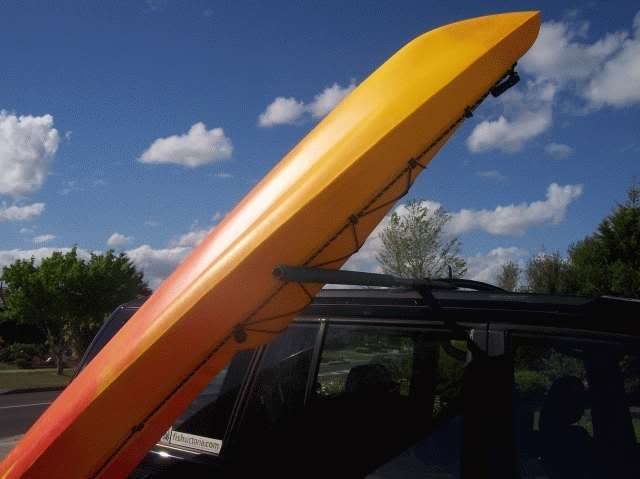You've gone to the trouble of making things easy, a nice crate to hold the gear also. but what happens when the gear gets hit by a wave, it flips you or you flip yourself and every thing sinks to the bottom. The answer is leashes for all your gear and straps/bungee to hold stuff in place.
You need to tether everything you don't want to lose to the kayak in some way. the answer to this is the rod, paddle, knife,pliers leash.
there are many different types and sizes but essentially it's just a cord tied to something at one end and secures at the other.
A couple of different types
Above is a coiled lead , usually made D.I.Y from some phone line coil. The one above is nylon. the one below is a plain cord, many people make the leads with bungee cord , i used to but in reality its not going to spring back anywhere. normal cord is sufficient and cheaper
If you dont have one of these or something like it you will lose something that you didn't want to lose
Making Leashes
Its really easy to go out and buy them, but when you have about 10 or more on the kayak with you at 12-20 dollars each they can get expensive. I have up to 4 rods, pliers,tackle bag, knife, sponge, anchor reel, tackle boxes etc. When you add them all up it would come to alot of money. The main one i would buy though is the leash for the paddle, most are very sturdy and have a three way velcro securing strap.
If you want to make them , they are very easy.
Its just some 4 mm cord with a cheap dog leash snap on one end tied with a double knot and a more flexible cord on the other that wraps around the rod handle. Any type of snap will do other then the type shown, i have a few different styles. The one in the picture is cast alloy but the best are brass and last for ages. As long as you keep them oiled with crc or similar then they are pretty good and don't corrode much.
First off this one is made with bungee as the main line and a soft cord as the loop for the article to be tethered.
Make a loop and thread the two ends of the soft cord through it. Its held together with a small cable tie to keep the ends together of the bungee.The bungee could just as easily be normal cord as in the picture above
Wrap around as shown
Loop over the cord and under the bungee
Pull it tight
Put a dab of super glue on or use hot glue, cut to tidy up the ends and use heat shrink over it.
This one has a compression clip on it, the bungee pushes in and then the sleeve pulls down pushing the barbs into the cord. Its a very secure join, but ive used super glue on it as well
That's how easy it is to make a leash for anything you want to attach to the kayak.
























